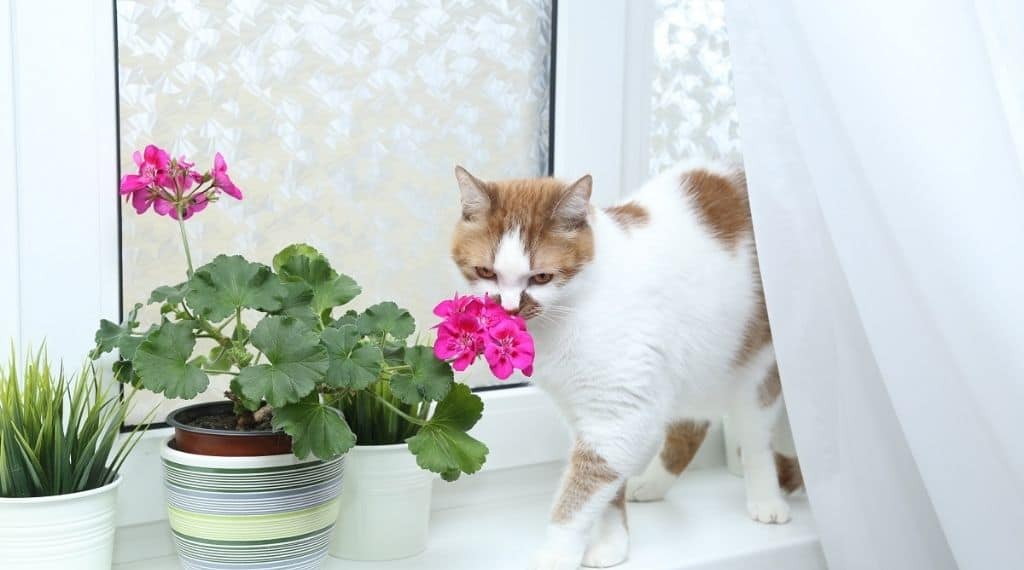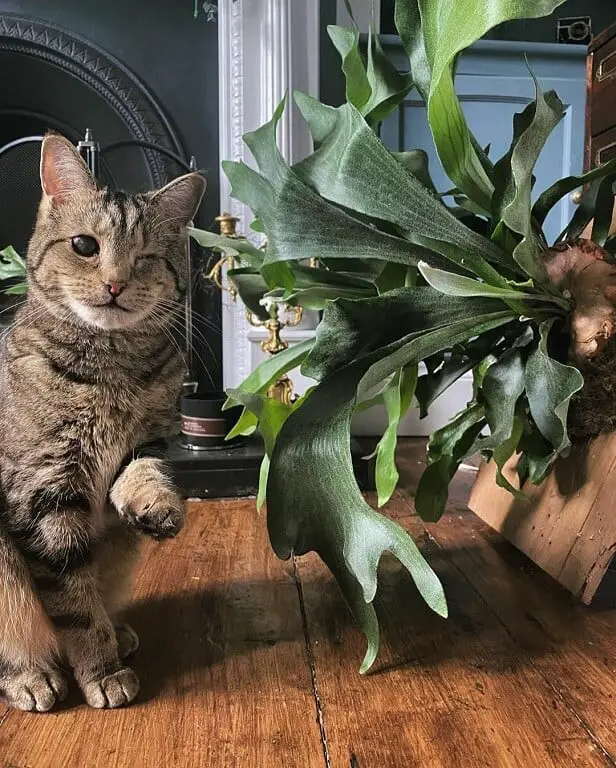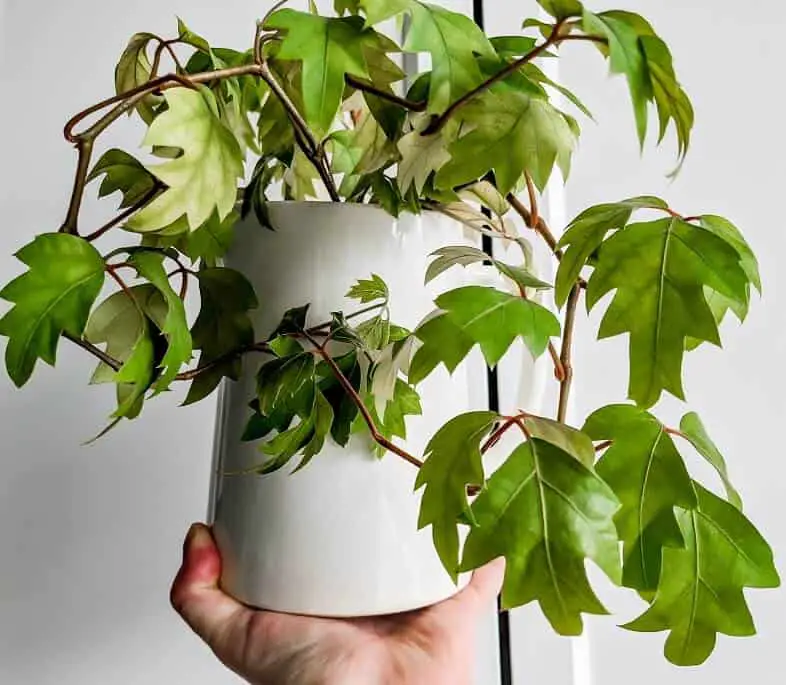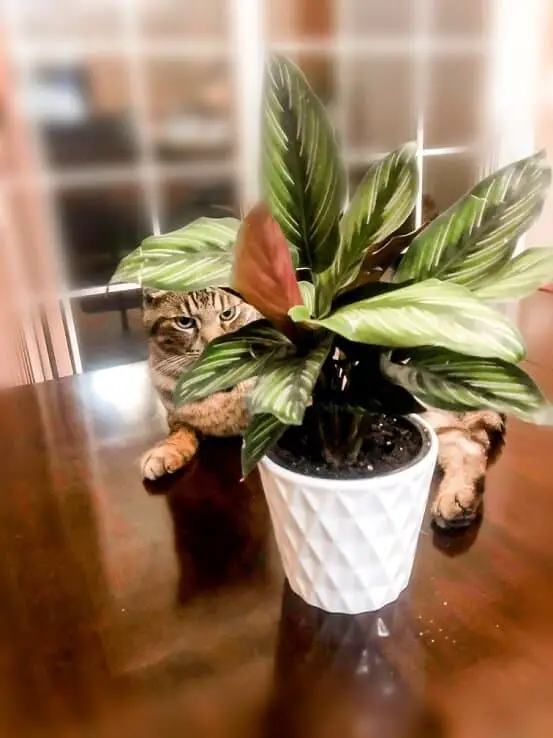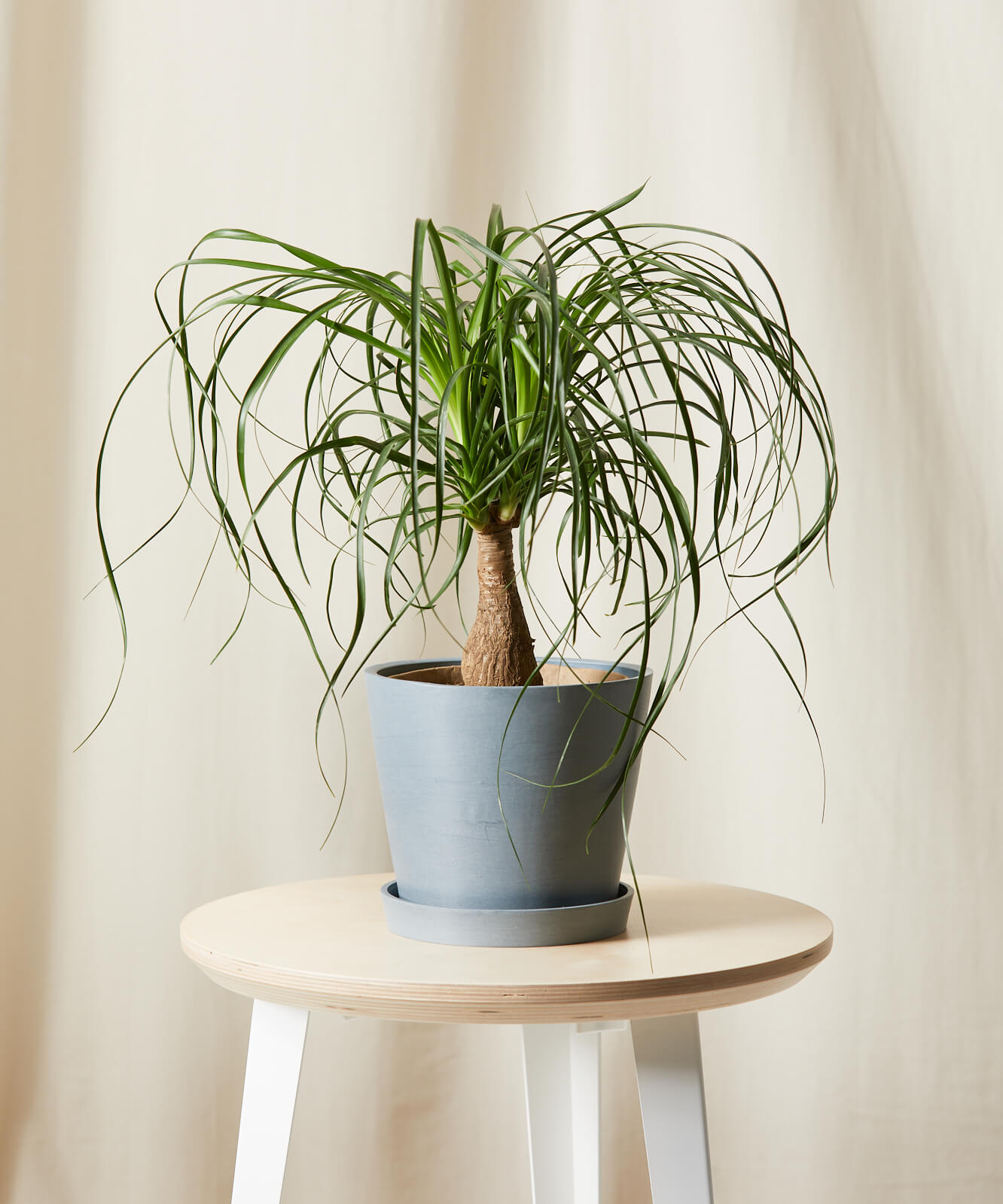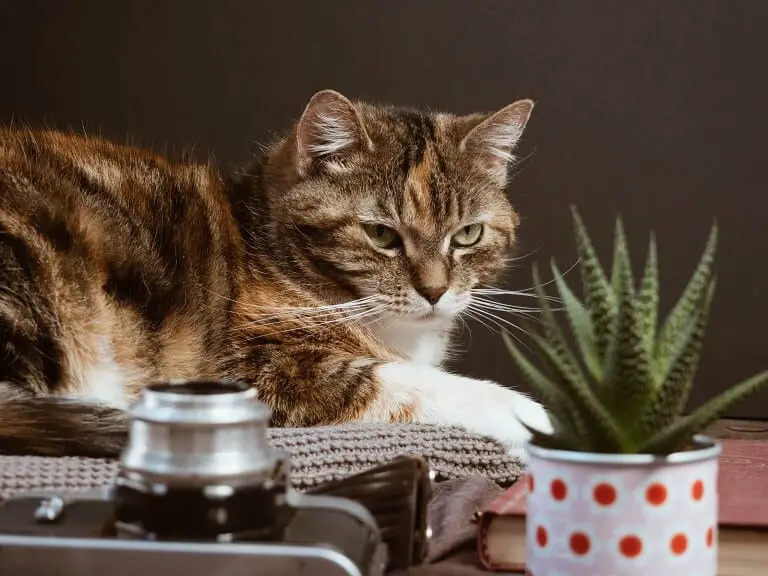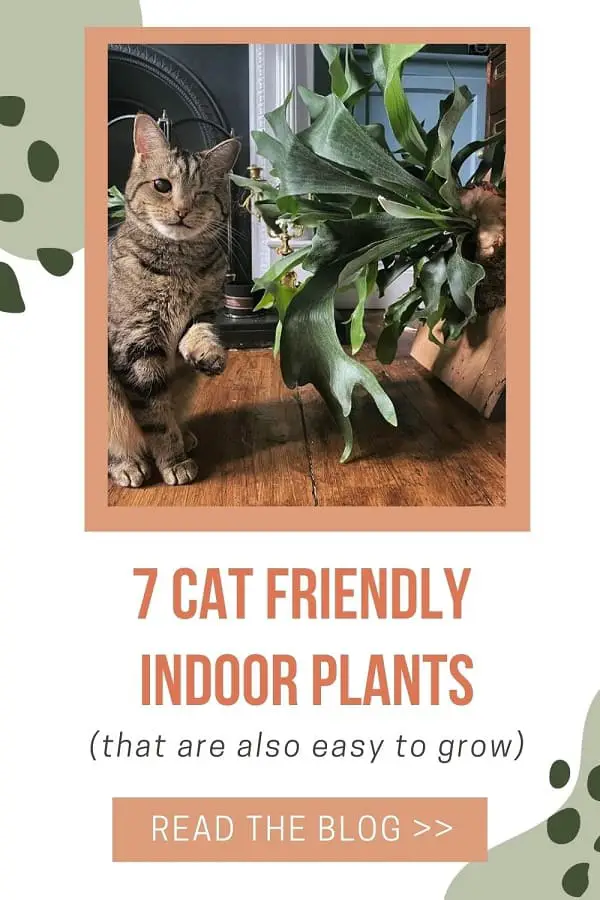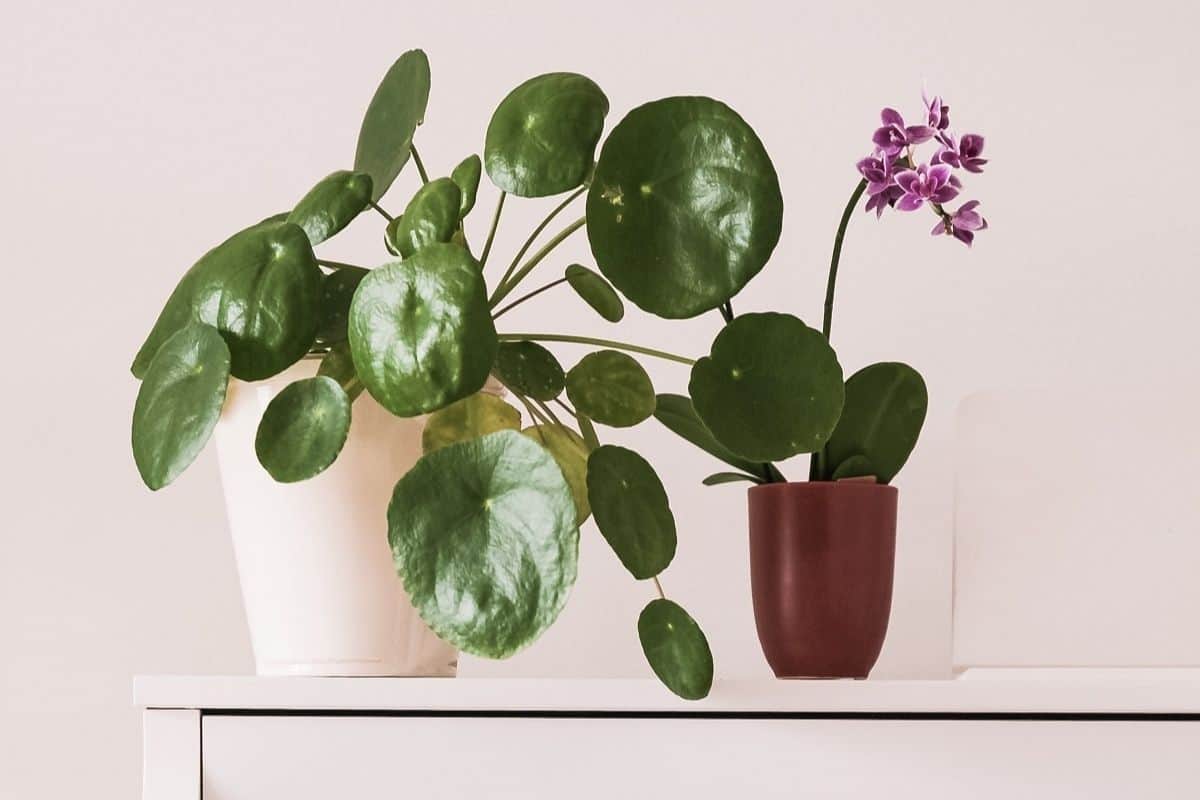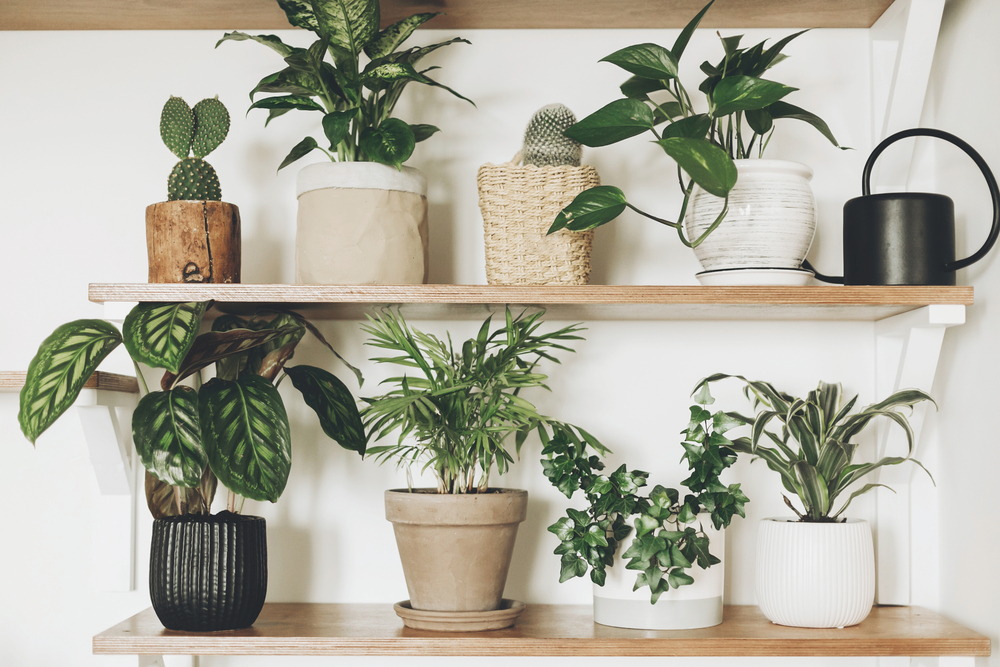Cat Friendly Indoor Plants you should know
One of the most common concerns cat owners have around adding plants to their home decor is knowing which houseplants are safe for cats.
As much as you may try to keep your plants out of your cat’s reach, cats are smart and determined.
If they want to get to it, they will find a way.
This post contains affiliate links. As an affiliate partner of various brands, we earn a little commission on qualifying purchases, at no extra cost to you. When you purchase through our links, you help our business to keep going. So thank you for your support! You may read our full disclaimer for more information.
To alleviate some of the stresses of keeping your cat away from your plants, choosing a cat friendly indoor plant that is non-toxic will keep your cats safe.
It will also allow you to embrace the natural beauty plants add to any room without worry.
Keep reading to find out our top 7 cat friendly indoor plants that are also easy to grow.
What types of indoor plants are safe for cats?
The leaves, sap, or seeds of some indoor plants can be toxic to your cats.
But don’t panic!
Not all houseplants are poisonous or dangerous to your furry friends.
Not only do you need to ensure you choose a non-toxic plant you will also want to avoid plants that may produce thorns as these can also be very dangerous for your cat.
Fortunately, there are many houseplants that are safe for cats, making it easy to have both.
It is actually quite easy to create a healthy and safe environment for your four-legged friend while basking in the beauty that plants bring to indoor spaces.
At a glance, 7 cat friendly indoor plants that are also easy to grow:
Even though a houseplant may be cat-friendly, we still recommend trying to keep your cats away from your houseplants for extra precaution.
If you do notice your cat nibbling on your plants, watch for signs of a negative reaction and contact a veterinarian if necessary.
Best Indoor Plants for Cats
1. Staghorn Fern
The staghorn fern is safe for cats and is a non-toxic indoor plant.
This fun spunky plant gets its name from its leaves which are shaped like antlers.
Due to the resemblance, this plant makes an amazing piece of living art when mounted on a wooden plank against the wall.
If you’re up for a DIY project, check out Apartment Therapy for instructions on how to mount a Staghorn Fern.
If the mounted look does not go well with your decor, try a hanging planter or wooden box.
The leaves of the plant tend to get a little droopy so you will want to keep it off the floor.
Keep a spray bottle close by and mist your Staghorn regularly as the plant absorbs water through its fronds, which is why it can be mounted to the wall instead of planted in a regular pot.
2. Areca Palm
The Areca Palm is a fairly common houseplant. It is mainly recognized by its feathery green fronds and multiple stems that emerge from the base.
This palm plant is sure to bring a tropical feel to any interior, but caring for a palm plant can be more difficult than other common houseplants.
We suggest only going for this type of palm plant if you are going to follow the proper care instructions.
There are other palms that may be a better fit for you if keeping plants alive is not your forte.
Areca Palms are known to grow up to 12 feet tall with a 6 foot spread.
You can however, purchase these in various sizes so you may opt for a tabletop version and re-pot it as it grows, or purchase a mature one that is already near its full growth to fill an empty space in your living room or bedroom.
Place your Areca Palm in a bright place away from direct sunlight.
This is an amazing air-cleansing plant that acts as a natural humidifier so if your house is dry this plant will add moisture to the air making it more comfortable.
The Areca Palm also absorbs toxins and fights against odors present in our interiors.
3. Grape Ivy
Don’t let the name of this plant fool you.
Although the word grapes is in its name, you won’t have to worry about Felix getting hold of any real grapes.
It’s named Grape Ivy because its leaves resemble oak and grape leaves.
Grape Ivy is non-toxic to cats, making it one of our top houseplants safe for cats that is also extremely versatile when it comes to home decor.
You can choose to hang your Grape Ivy from your ceiling or plant it in a tall pant stand and let the leaves flow towards the floor.
This plant is fairly tolerant of low light which makes it great for adding natural beauty to a dim room or basement.
When grown indoors, this vine is likely to reach up to 5 feet.
Grape Ivy is an easy to grow houseplant that can also be planted with a small trellis to encourage the plant to climb rather than trail.
Personally, we like the trailing look better as it makes the plant look more abundant.
Either way, your cat will be safe around this pet-friendly plant.
4. Calathea
This indoor plant is native to the tropical forests of South America.
The Calathea comes in a variety of species and appreciates warm, humid, and shady environments making it the perfect plant for the kitchen or bathroom.
The beauty of Calathea lies in their leaves.
Colored in different shades of green and decorated with brilliant patterns, their wide leaf creates an exotic look to any interior.
Caring for a Calathea plant is fairly easy.
The leaves of your Calathea plant will typically tell you if it’s healthy or if something is off.
If you notice your Calathea’s leaves curling, this is a strong indication that it’s not in the right environment.
The most common reasons your Calathea leaves are curling are:
- too much light
- soil and environment is too dry
- temperature fluctuations in the room
As we mentioned above, Calathea’s like warm, humid environments which is why we recommend placing this plant in a bathroom or kitchen.
If your Calathea leaves are curling, move your plant to an area where it will get less light.
Check the soil to make sure it is staying moist but not soggy, increase the humidity in the room, and try to keep the heat consistent around 75 F.
There are many Calathea varieties.
For a truly eye-catching cat-friendly species, check out the Calathea Pinstripe.
Its stunning green leaves are patterned with a striking pinkish-white pinstripe with purple undersides.
Be prepared for a little extra clean up as your cats will love hiding among the wide soft leaves of this cat-friendly plant.
5. Ponytail Palm
With its robust and plump trunk, the ponytail palm is safe for cats and one your cat will love to scratch its claws against.
If you notice your cat doing this, you’ll need to move your ponytail palm to a paw free area of your home if you want it to survive.
We’re thrilled that the ponytail palm is not poisonous to cats because, as you can see in the picture below, this unique little beauty makes a stunning focal point with its miniature tree shape look crowned with a beautiful tuft of curved thin leaves.
When grown indoors it grows slowly and can reach up to 3 feet, making it perfect for placing on a low stool or short table.
Elevating your ponytail palm just slightly off the ground in a short pot will help show off its unique trunk which is wide at the bottom, getting skinnier towards the top.
Although its name would indicate it’s a palm plant, it is actually part of the succulent family and needs to be cared for as such.
Bloomscape offers a great ponytail palm care guide.
While you’re there check out their stunning plants for sale.
The ponytail palm has established itself as a plant that is both solid and elegant, reassuring and soothing.
This is another excellent choice for those who tend to forget to water plants regularly.
It will tolerate drier conditions, just don’t completely forget about it.
You May Also Enjoy: Keep Plants & Cats Safe – How To Keep Cats Out Of House Plants
6. Haworthia
The Haworthia is also part of the succulent family. People often tend to relate its shape to a miniature aloe vera plant.
Its long, pointed leaves also make it look a bit like a cactus.
This little succulent is super easy to care for and is good for those who tend to forget to water plants regularly.
Although you do not want this to dry out too much that it becomes unsalvageable.
Our how to grow succulents indoors article will tell you everything you need to know to keep your Haworthia alive.
We love the way a small Haworthia looks placed on a bookshelf, end table or wall shelf.
This indoor plant is perfect on a decorative shelf or on the corner of your work desk.
A Haworthia plant is sure to add dimension and visual appeal without being overbearing.
Since it is smaller in size, your cats may decide to get a little playful with it.
We suggest planting it in a plastic pot (with drain holes) that is less likely to break if your cat knocks it over.
7. African Violet
If you’re looking for a flowering houseplant that is safe for your cats and easy to grow, look no further than the African Violet.
African Violet is non-toxic to cats, versatile, and comes is a range of beautiful purple hues
To care for your African Violet, place it in a north or east-facing room where it will get moderate to bright indirect light.
Use a potting soil specifically formulated for African Violets, such as this horticulture mix by SunGro.
Keep the soil moist.
If you get any water on your African Violet’s leaves, gently wipe it off immediately, if left to sit it could damage the leaves.
With its colorful flowers and rounded leaves, this plant is stunning in neutral-colored rooms.
This indoor plant is perfect for brightening up your room, place it beside a plain piece of furniture, or use it as a centerpiece on your coffee table.
When your African Violet is cared for properly it has the ability to bloom year-round.
As long as your plant is doing well, the African Violet is fairly easy to propagate.
This way you will be able to continue adding to your collection without spending a dime.
Although these are our top 7 picks for houseplants safe for cats and easy to grow, there are many more cat-safe plants that you can decorate your home with.
Before introducing any plant into a home with cats, check ASPCA website to know if it is safe for your pets.
Pin for later: cat friendly indoor plants

